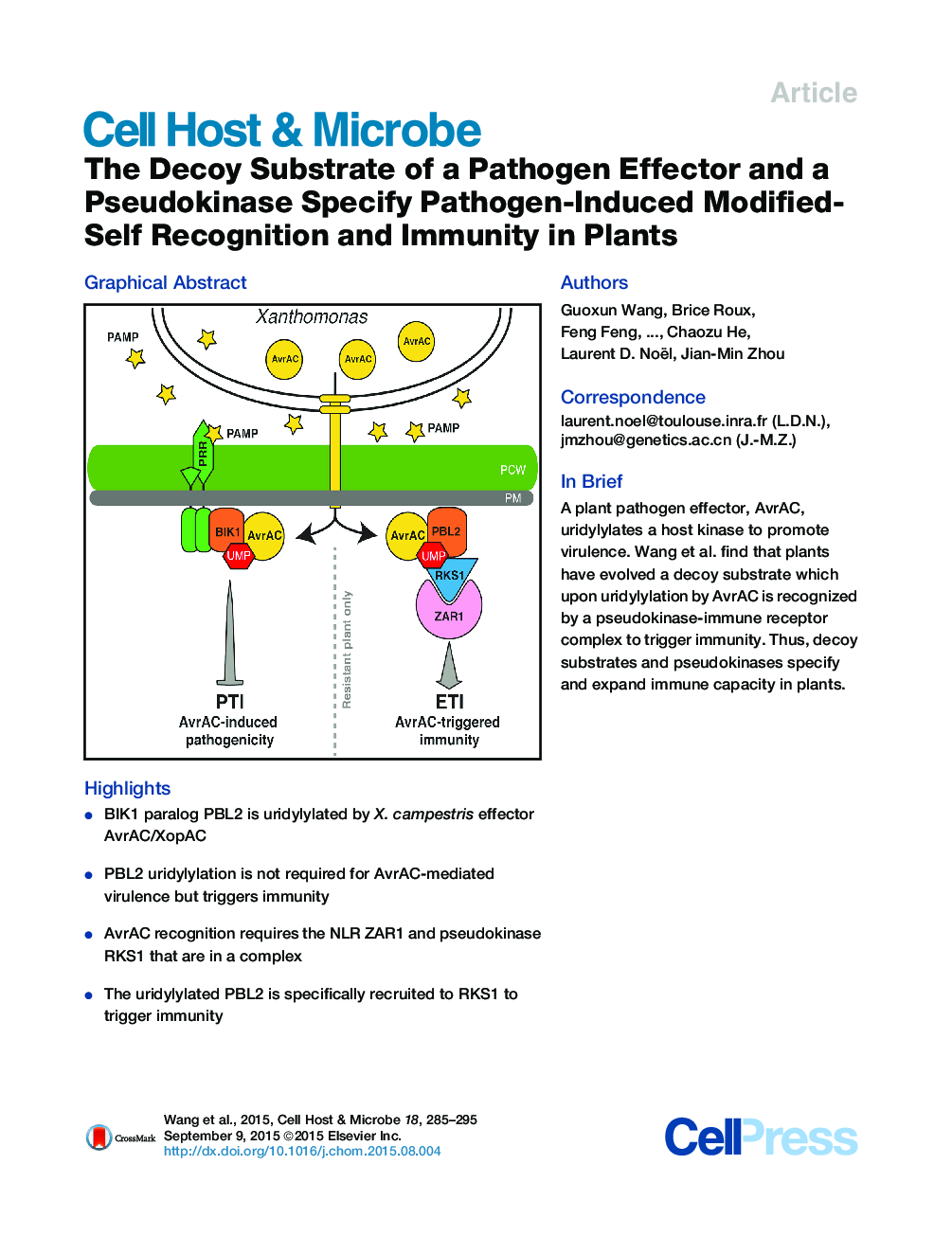| کد مقاله | کد نشریه | سال انتشار | مقاله انگلیسی | نسخه تمام متن |
|---|---|---|---|---|
| 4360827 | 1301317 | 2015 | 11 صفحه PDF | دانلود رایگان |
• BIK1 paralog PBL2 is uridylylated by X. campestris effector AvrAC/XopAC
• PBL2 uridylylation is not required for AvrAC-mediated virulence but triggers immunity
• AvrAC recognition requires the NLR ZAR1 and pseudokinase RKS1 that are in a complex
• The uridylylated PBL2 is specifically recruited to RKS1 to trigger immunity
SummaryIn plants, host response to pathogenic microbes is driven both by microbial perception and detection of modified-self. The Xanthomonas campestris effector protein AvrAC/XopAC uridylylates the Arabidopsis BIK1 kinase to dampen basal resistance and thereby promotes bacterial virulence. Here we show that PBL2, a paralog of BIK1, is similarly uridylylated by AvrAC. However, in contrast to BIK1, PBL2 uridylylation is specifically required for host recognition of AvrAC to trigger immunity, but not AvrAC virulence. PBL2 thus acts as a decoy and enables AvrAC detection. AvrAC recognition also requires the RKS1 pseudokinase of the ZRK family and the NOD-like receptor ZAR1, which is known to recognize the Pseudomonas syringae effector HopZ1a. ZAR1 forms a stable complex with RKS1, which specifically recruits PBL2 when the latter is uridylylated by AvrAC, triggering ZAR1-mediated immunity. The results illustrate how decoy substrates and pseudokinases can specify and expand the capacity of the plant immune system.
Graphical AbstractFigure optionsDownload high-quality image (170 K)Download as PowerPoint slide
Journal: - Volume 18, Issue 3, 9 September 2015, Pages 285–295
